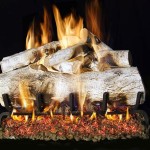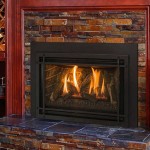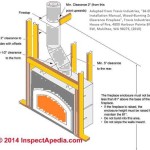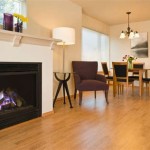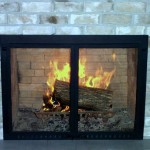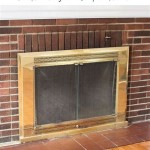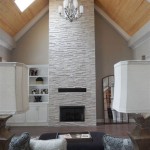```html
Cedar Ridge Fireplace: A Comprehensive Guide
Cedar Ridge Fireplace represents a segment of the heating appliance market known for its diverse product offerings, ranging from traditional wood-burning fireplaces to modern gas and electric models. Understanding the range of products, their features, and proper maintenance is crucial for consumers considering investing in or maintaining a Cedar Ridge Fireplace.
The term "Cedar Ridge Fireplace" can refer to a specific brand, a style of fireplace, or more generally, fireplaces constructed with features reminiscent of the Cedar Ridge aesthetic. This aesthetic often incorporates design elements that evoke a rustic, natural, or woodsy ambiance, with the use of materials like stone, brick, or reclaimed wood in the surrounding framework. To properly assess a specific Cedar Ridge Fireplace, it is imperative to identify the manufacturer, model, and fuel type.
Understanding the Different Types of Cedar Ridge Fireplaces
Cedar Ridge Fireplaces, or fireplaces marketed under similar names, can be categorized based on their fuel source. These categories include wood-burning, gas, and electric fireplaces, each with distinct characteristics influencing installation requirements, operating costs, and environmental impact.
Wood-Burning Fireplaces: These are the most traditional type and are appreciated for the authentic ambiance they create. They require a chimney for venting smoke and combustion byproducts. Installation often involves significant construction to ensure proper ventilation and compliance with local building codes. Wood-burning fireplaces demand a consistent supply of seasoned wood, and users must be diligent in cleaning the firebox and chimney to prevent creosote buildup, a fire hazard. The efficiency of wood-burning fireplaces can vary widely, with older models often being less efficient and contributing to air pollution. Modern wood-burning fireplaces are engineered to meet stringent emissions standards and offer improved efficiency.
Gas Fireplaces: Gas fireplaces offer convenience and ease of use. They can be fueled by natural gas or propane. These fireplaces typically feature push-button ignition and adjustable flame height. Installation requires a gas line connection and venting, which can be either direct vent (vented directly to the outside) or vent-free. Direct vent models are generally considered safer as they completely exhaust combustion byproducts outdoors. Vent-free models, while easier to install, require careful monitoring to ensure adequate ventilation in the room to prevent the buildup of carbon monoxide. Gas fireplaces offer consistent heat output and are cleaner burning than wood-burning models.
Electric Fireplaces: Electric fireplaces are the most versatile and easiest to install. They do not require venting or gas lines, making them suitable for apartments, condos, and other locations where installing a traditional fireplace is impractical. Electric fireplaces use electricity to generate heat, and they often feature realistic flame effects. They are typically portable and can be moved from room to room. While they do not offer the same level of heat output as wood-burning or gas fireplaces, they are an energy-efficient supplemental heating option. Electric fireplaces are also a safe option since they do not produce any harmful emissions.
Key Features to Consider When Choosing a Cedar Ridge Fireplace
Selecting the right Cedar Ridge Fireplace requires careful consideration of several key features to ensure the chosen model meets individual needs and preferences. These features include heating capacity, efficiency, safety features, aesthetic design, and ease of use.
Heating Capacity: The heating capacity of a fireplace is measured in British Thermal Units (BTUs). The appropriate BTU rating depends on the size of the room or area to be heated. For larger spaces, a higher BTU rating is necessary. It is important to consider the insulation of the room when determining the required heating capacity. A well-insulated room will require fewer BTUs to maintain a comfortable temperature.
Efficiency: The efficiency of a fireplace refers to the percentage of fuel that is converted into usable heat. Higher efficiency ratings translate to lower operating costs and reduced environmental impact. Wood-burning fireplaces generally have lower efficiency ratings than gas or electric models. However, modern wood-burning fireplaces with advanced combustion technology can achieve higher efficiency. Gas fireplaces often have efficiency ratings above 70%, while electric fireplaces are virtually 100% efficient, as all the electricity used is converted into heat.
Safety Features: Safety is a paramount concern when selecting a fireplace. Look for models that incorporate safety features such as overheat protection, automatic shut-off mechanisms, and child-safe controls. Gas fireplaces should have a built-in oxygen depletion sensor (ODS) to prevent carbon monoxide buildup in case of inadequate ventilation. For wood-burning fireplaces, ensure that the installation meets all local building codes and that the chimney is properly maintained to prevent chimney fires.
Aesthetic Design: The aesthetic design of a fireplace is a crucial factor for many consumers. Cedar Ridge Fireplaces and similar styles often feature rustic or natural design elements. Consider the overall decor of the room and choose a fireplace that complements the existing style. Options include various finishes, such as stone, brick, wood, and metal. The flame presentation is also an important aesthetic consideration, with some models offering realistic flame patterns and adjustable flame colors.
Ease of Use: Ease of use encompasses factors such as ignition, temperature control, and maintenance requirements. Gas and electric fireplaces are generally easier to use than wood-burning models. Gas fireplaces often feature push-button ignition and remote control functionality. Electric fireplaces typically have simple controls for adjusting the heat output and flame effects. Wood-burning fireplaces require more effort to start and maintain the fire, as well as regular cleaning of the firebox and chimney.
Maintaining Your Cedar Ridge Fireplace for Optimal Performance
Proper maintenance is essential for ensuring the longevity, safety, and optimal performance of a Cedar Ridge Fireplace. The specific maintenance requirements vary depending on the type of fireplace.
Wood-Burning Fireplace Maintenance: Wood-burning fireplaces require regular cleaning to remove ash and creosote. Ash should be removed after each use or after a few uses, depending on the frequency of fires. Creosote is a flammable byproduct of wood combustion that can accumulate in the chimney and increase the risk of chimney fires. It is recommended to have the chimney inspected and cleaned annually by a qualified chimney sweep. Inspect the firebox for cracks or damage and repair as needed. Also, ensure that the damper is functioning correctly to prevent heat loss when the fireplace is not in use.
Gas Fireplace Maintenance: Gas fireplaces require less maintenance than wood-burning models. However, it is still important to perform regular inspections. Check the burner for any debris or obstructions and clean as needed. Inspect the gas lines for leaks and have them repaired by a qualified technician if any are found. Clean the glass front of the fireplace with a fireplace glass cleaner to remove any soot or deposits. Also, inspect the venting system to ensure it is clear of any obstructions.
Electric Fireplace Maintenance: Electric fireplaces typically require minimal maintenance. Keep the unit clean by dusting regularly. Check the fan regularly to ensure it is free of dust and debris. If model has a simulated flame effect that uses light bulbs, replace them as needed. Inspect the power cord for any damage and replace it if necessary. Electric fireplaces should be serviced by a qualified technician if any problems arise.
Beyond the above, always adhering to manufacturer's instructions concerning operation and maintenance is paramount. Ignoring these instructions can lead to safety hazards, reduced efficiency, and voided warranties.
In conclusion, the "Cedar Ridge Fireplace" designation points to a broad category encompassing various fireplace types and styles. When selecting a 'Cedar Ridge' model, or one marketed with similar aesthetic characteristics, a comprehensive assessment of fuel type, key features, and maintenance requirements is crucial for ensuring its safe and efficient operation and alignment with the intended purpose and aesthetic preferences.
```
Cedar Ridge Hearth 43 75 In Apple Spice Ventless Natural Or Liquid Propane Gas Fireplace At Com

Cedar Ridge Hearth Undefined At Com

Cedar Ridge Hearth Cdr Rdg Com All In One Gas Vf At

Cedar Ridge Hearth Undefined At Com

Cedar Ridge Hearth 30 In 32000 Btu Pan Burner Vent Free Gas Fireplace Logs With Thermostat And Remote At Com

Cedar Ridge Hearth Ventless Gas Stove 25 000 Btu T Stat Com

Cedar Ridge Fireplace Tv Stand For Tvs Up To 70 Rustic White 19 60 X 10 31 00 Kroger

Cedar Ridge Hearth 24 Decorative Realistic Fireplace Ceramic Wood Log Set Model Crhed24rt D Com

Cedar Ridge Hearth Recondition 18 In 30 000 Btu Dual Burner Ventless Gas Fireplace Logs With Thermostat Com

Cedar Ridge Hearth 24 Decorative Realistic Fireplace Ceramic Wood Log Set Model Crhd24t D Com
Related Posts

